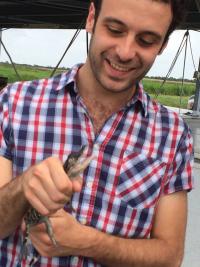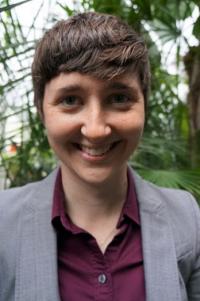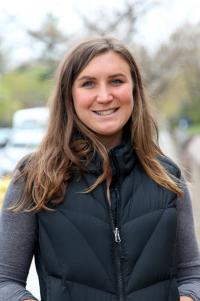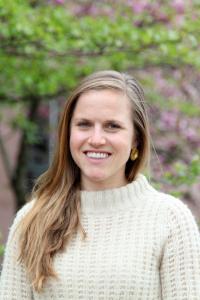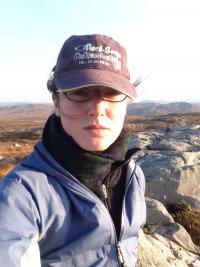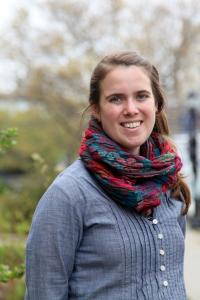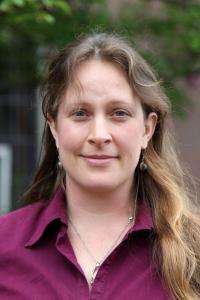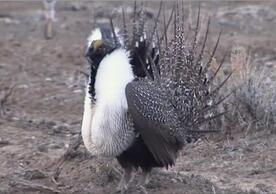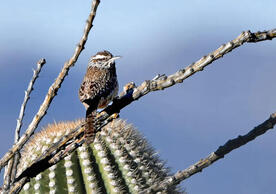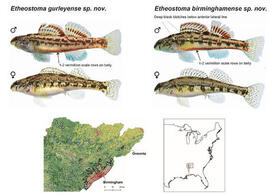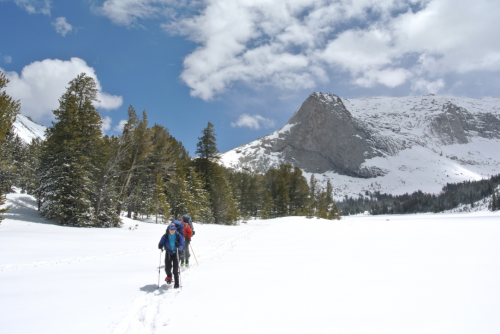
Exploring summer environmental research at YIBS.
This May, YIBS awarded research funding to 31 Yale masters and Ph.D. students through our 2016 Small Grants Program. Our student researchers are working this summer and into the following year in over 12 U.S. states and 13 countries worldwide on environmental research topics. Projects range from health impacts of wildfire smoke in Alaska, to climate and mountain-building interactions in the Patagonian Andes, to lemur conservation in Madagascar.
Learn more about YIBS student grantees’ work in the below research profiles:
Ph.D. Students
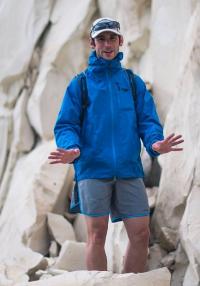 David Auerbach
David Auerbach
Research topic: Understanding the evolution of the Patagonian rain shadow through the Cenozoic
Location: Patagonia (southern Chile & Argentina)
Summary: David is studying terrestrial sedimentary rocks in Patagonia and using their hydrogen isotope geochemistry to reconstruct the climate during the last 66 million years. In conjunction with global climate records, he then determines how strong the rain shadow of the Patagonian Andes has been through that time, and by extension, when and how quickly the Andes have risen. This helps to understand not only the history of Patagonia’s climate and tectonics specifically, but how mountain building and climate interact more generally.

Janet Burke
Research topic: Planktonic foraminiferal morphology and porosity in a cooling ocean
Location: Samples collected from the Newfoundland Ridge, northern Atlantic Ocean
Summary: Janet’s research is focused on trying to understand the impact of the Late Eocene and Early Oligocene climate change on pelagic communities. More specifically, she is studying fossil assemblages of planktonic foraminifera and measuring biologically significant morphological features to better understand whether the changes occurring in the oceans during this interval impacted the metabolism and ecology of pelagic microorganisms.
 Chloe Chen-Kraus
Chloe Chen-Kraus
Research topic: Assessing impacts of anthropogenic disturbance on lemurs at Bezà Mahafaly Special Reserve, Madagascar
Location: Madagascar
Summary: This summer, Chloe began her dissertation research examining the impacts of human activity on the endangered Verreaux’s sifaka at Bezà Mahafaly Special Reserve in southwestern Madagascar. Bezà is an ideal location for a study of this sort, as the reserve works closely with the local community and has recently been expanded to include various management zones (including new core areas, buffer zones, and sustainable use zones). Chloe’s hope is that, by better understanding how lemurs are impacted by human activities, the reserve can be effectively managed to sustain the livelihoods of both people and the wildlife endemic to this area.
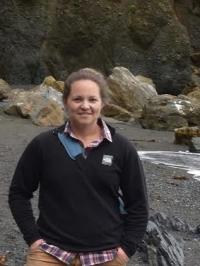 Devon Cole
Devon Cole
Research topic: Silica cycling through the biosphere across the Permian-Triassic Extinction
Location: Samples collected from Japan
Summary: The Permian-Triassic extinction (251 million years ago) was the most devastating extinction event in Earth’s history, wiping out nearly 85% of marine species and 70% of terrestrial vertebrate genera. Devon is using samples of deep sea silica rich sediments deposited continuously through the extinction to investigate changes in the silica cycle, in order to improve our understanding of perturbations to critical biogeochemical cycles surrounding this event.
Matteo Fabbri
Research topic: 4D dynamics of cells and tissues to revolutionize neurogenesis in Archosauria
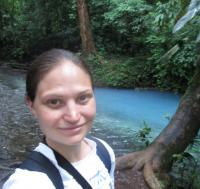 Katelyn Gray
Katelyn Gray
Research topic: Reconstructing terrestrial climates using gar scales
Location: Eastern United States
Summary: Katelyn is calibrating an environmental proxy using the scales from modern gar fish. Because these scales are uniquely made out of enamel, they preserve easily as fossils. By measuring the oxygen and clumped isotopes of fossil scales, Katelyn plans to reconstruct past climates.
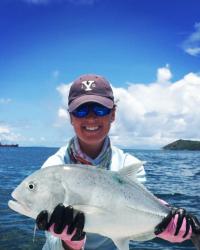 Jessica Glass
Jessica Glass
Research topic: A comparison of stable isotope analytical techniques for a marine teleost predator, the Giant Trevally (Caranx ignobilis)
Location: Indian Ocean sites including South Africa, Mozambique, Mauritius, the Seychelles, Tanzania, Kenya, Sri Lanka and the Andaman Islands
Summary: Jessica is studying an extremely popular marine sportfish known as the Giant Trevally, which is a top predator on coral and rocky reefs throughout the Indo-Pacific. Very little is known about this fish outside of Hawaii, where it is overfished, which raises concerns for populations in the western Indian Ocean that are heavily targeted by recreational and artisanal fisheries. Working closely with colleagues at the South African Institute for Aquatic Biodiversity, Jessica is sequencing the DNA of Giant Trevallys to see how connected individuals are across their distribution, as well as examining their trophic ecology in rocky and coraline habitats using stable isotope analysis. Her research is being complemented by work recently undertaken to monitor the movement behavior of individual Giant Trevallys that have been tagged with acoustic receivers in order to paint a more complete biological picture of the evolution, ecology, and behavior of this species.
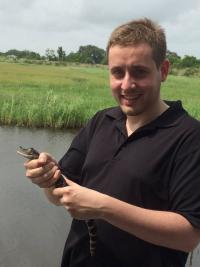 Michael Hanson
Michael Hanson
Research topic: The development and evolution of cranial kinesis in birds
Location: Samples collected across North and South America
Summary: Michael’s research focuses on the origins of the avian cranial kinetic mechanism, the ability for birds to move their bills independently of the rest of their skulls. This is a novel adaptation in modern birds not found in their closest living relatives, the crocodilians, nor in their dinosaurian ancestors. He is approaching this project using methods in developmental biology, paleontology, and comparative anatomy, looking at embryological development, fossil specimens, and contrast-stained CT scans of the skeleton and musculature of bird and crocodilian skulls. Little research has been done to investigate the evolutionary history of complex biomechanical structures, and this project aims to take a multi-disciplinary approach to understanding the origins of a key innovation for feeding found in all living birds.
 Lan Jin
Lan Jin
Research topic: Air pollution and adverse birth outcomes in Lanzhou, China
Location: Lanzhou, China
Summary: Lan’s project focuses on modeling urban air pollution at high spatial resolution and estimating risks of adverse birth outcomes related to maternal exposure to urban air pollution. Innovations of this work include (1) developing low-cost sampling strategy to capture air pollution gradient and (2) evaluating vertical variation of air pollution by different building height. Results from this work will help pregnant women and governments make more informed decisions regarding effective pollution control and health risks management.
 Myles Lennon
Myles Lennon
Research topic: Diversifying the solar market from the top-down and bottom-up
Location: California & New York
Summary: Myles’ preliminary dissertation research this summer will begin to identify the challenges, opportunities, and best practices for fostering greater racial diversity in the solar energy field - an industry with predominantly white leadership, employees, and consumers - through collaboration between communities and private companies in two emerging solar markets, the San Francisco Bay Area and New York City. He will engage in three months of applied ethnographic research with a large private solar company and a small grassroots environmental justice organization leading an “energy democracy” campaign in a low-income community of color. In attending to these two spaces, his summer research will identify strategies to diversify the solar field from the top-down and from the bottom-up.

Hui Li
Research topic: New internal biothermometer in biomass-PO4 to study vent macrobiota at the seafloor and microbial life beneath the seafloor
Location: Samples collected from the Explorer Ridge, Pacific Ocean
Summary: Hydrothermal vent-associated biological assemblages have advanced our knowledge of the thermal tolerance of organisms; however, habitat temperatures are still widely debated. Hui’s project studies the application of using O-isotope composition of PO4 (δ18Op) in soft-tissue biomass to calculate in situ habitat temperature of organisms inhabiting sharp and variable, or uncertain thermal gradients.
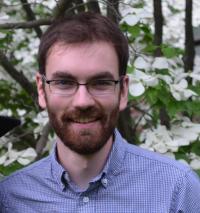 Daniel MacGuigan
Daniel MacGuigan
Research topic: Environmental effects on genomic signatures of hybridization
Location: North Carolina, South Carolina, Virginia, New York
Summary: Daniel’s research focuses on understanding the patterns and consequences of hybridization between different species of fish. He uses a variety of genetic techniques to detect the magnitude of gene flow across hybrid zones. By studying hybrid zones that span different spatial environmental gradients, he can determine how extrinsic factors help maintain reproductive isolation between species.
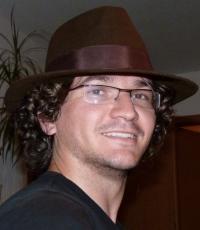 Holger Petermann
Holger Petermann
Research topic: Influence of changes in climate on squamate growth: Implications for future biodiversity loss
Location: Mojave Desert (Southern California, Northwest Arizona, Southern Nevada, and Southwest Utah)
Summary: Holger’s project aims to investigate the correlations between changes in climate and environment and growth in squamates using the Mojave Desert of the American West as a model ecosystem. The study will show how changes in key climate parameters (temperature and precipitation) influence the growth, recorded in their bone histology, of the individual specimens that are living in and are adapted to this extreme environment. The projected increase in temperature by the end of this century, in conjunction with changes in precipitation and the resulting habitat loss, is likely to require new methods and approaches to more accurately estimate the likeliness of diversity loss, and this project will contribute to these efforts.
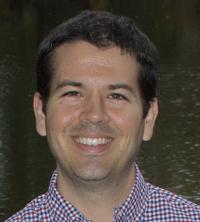 Jon Powell
Jon Powell
Research topic: Establishing waste informatics to mitigate materials management impacts to the terrestrial biosphere
Location: United States
Summary: This summer, Jon is developing a rigorous, bottom-up measurement of non-hazardous industrial waste production in the United States over the past few years. In contrast to attention historically paid to other waste streams (such as municipal waste and construction waste), non-hazardous industrial waste has not received much collective scrutiny owing to a lack of a federal mandate to track its management and the nature of its production. The goal is to build the estimate using high-resolution, geographically-resolved databases using available data from states, trade organizations, and individual manufacturing facilities. This research will fill a major data gap in the industrial ecology and waste management literature and tee up Jon’s future work that will pinpoint the greatest opportunities for enhanced materials reuse and recycling.
 Natalie Schultz
Natalie Schultz
Research topic: Quantitative analysis of the effects of land cover change on climate extremes
Location: Global
Summary: The overall objective of Natalie’s research is to investigate the role and response of land cover to climate extremes, in both the present climate and under future climate scenarios. Her research utilizes a new sub-grid global climate modeling framework and a rich dataset of satellite and atmospheric observations to: (1) statistically evaluate the effect of land cover on hot and cold temperature extremes, (2) explore the dominant land surface processes that contribute to changes in extremes, and (3) examine the contrasting response of forests and grasslands to heatwaves by quantitatively partitioning the surface temperature difference into its biophysical components. Through this research, Natalie will be able to disentangle the effects of land use/land cover change on climate extremes from other anthropogenic forcings.
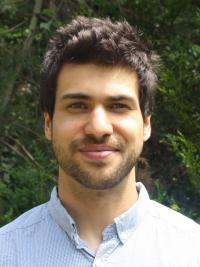 Noah Sokol
Noah Sokol
Research topic: From plant carbon to stable soil organic carbon: Is the path traveled as important as the input itself?
Location: New Haven, CT
Summary: Noah’s research focuses on how the carbon from plants becomes transformed into stable soil organic carbon - the largest terrestrial pool of carbon. Despite the significance of this link in the global carbon cycle, it also remains one of the most poorly understood. Noah’s research specifically aims to untangle the differences in how aboveground plant carbon (leaf litter detritus) and belowground plant carbon (root exudates) flow through the soil food web and ultimately become stabilized in the mineral soil. This research will help to (1) more accurately model the link between plants and soils in the terrestrial carbon cycle, and (2) improve our ability to predict how plants and soils will respond to the many facets of global environmental change, such as invasive species, deforestation, and climate change.
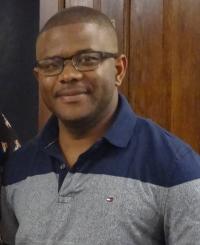 Peter Umunay
Peter Umunay
Research topic: Quantifying emissions from human-induced causes of forest degradation in the Congo Basin Region
Location: Democratic Republic of the Congo
Summary: Through a combination of remote sensing and in-situ field data, Peter’s PhD research aims to respond to the challenges of designing scientifically credible and cost-effective landscape-scale monitoring systems able to quantify, monitor and report carbon emissions from human-induced forest degradation. The application of this work is to build a model that links activities causing forest and biodiversity lost to underlying drivers, and construct reference scenarios to determine the scope for emission reductions.
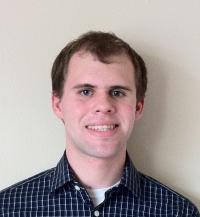 Christopher Whalen
Christopher Whalen
Research topic: Phylogenetic systematics of pan-Gnathostomata
Location: New Brunswick, Canada (and museum collections elsewhere)
Summary: Christopher studies the origin and early evolution of active, swimming, marine organisms (nekton) during the Early-Mid Paleozoic (~521-359 million years ago). In particular, he seeks to better understand the interrelationships of a diverse group of extinct jawed fishes known as placoderms, which appear to record the key transitions leading to Gnathostomata, the clade encompassing all modern vertebrates other than the jawless lampreys and hagfishes.
 Steve Whittaker
Steve Whittaker
Research topic: Ambient air pollution per specific land use features in the Eastern Caribbean region
Location: St. Kitts and Nevis
Summary: While the Caribbean islands of St. Kitts and Nevis are not known to be as heavily polluted places, the ongoing widespread development particularly in the new tourist economy has brought an influx of people and increase of air pollutants in the form of industrial emissions and automobile exhaust. This is particularly important as, owing to land use complexities, many native families live next to factories and landfills and major roads that lie near schools, both conditions that potentially giving rise to respiratory conditions such as asthma and chronic obstructive pulmonary disease. For this research, Steve is conducting ambient air quality sampling at transport, recreation and construction sites on the island. He is measuring levels of nitrogen dioxide (NO2), ozone (O3) and particulate matter (PM) levels within the context of land use as terrestrial features are transformed by urbanization and tourism. His summer work is furthering his preliminary dissertation work in locations where pollution maxima can exceed World Health Organization guidelines, thus creating the potential for adverse respiratory health effects of nearby residents.
 Siyang Xia
Siyang Xia
Research topic: Oviposition preference in sylvatic and domestic populations of Aedes aegypti in Gabon
Location: Gabon
Summary: Siyang’s research mainly focuses on the evolution of oviposition behaviors in the Yellow Fever mosquito Aedes aegypti. For his field work, he will first try to identify the main environmental factors that influence the oviposition choices of female mosquitoes, and then compare the oviposition preference between the forest population, which represents the more ancestral form of Ae. aegypti, with the domestic populations that resident in human environments. He hopes this research will help us understand how Ae. aegypti successfully invaded domestic environments and spread around the world, and more broadly, how behavioral modifications are linked to habitat shifts in general.
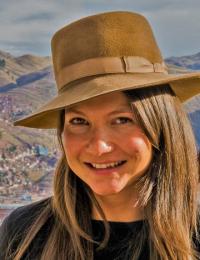 Michelle Young
Michelle Young
Research topic: Land management practices and ecological verticality: A study of prehispanic environmental adaptation strategies at Atalla, Huancavelica, Peru
Location: Peru
Summary: Michelle’s research at the archaeological site of Atalla will contribute to an understanding of the development of indigenous subsistence strategies through an examination of early agricultural terracing, camelid use, and resource procurement from various ecological zones. An archaeological study of Atalla will finally allow us to trace the evolution of agricultural and ecological strategies that not only supported ancient societies, but also continue to be essential to modern Peruvian communities.
 Yiqi Zheng
Yiqi Zheng
Research topic: Using relationships between photosynthesis and formaldehyde column as a probe of isoprene emission
Location: Southeastern United States
Summary: Isoprene is a major plant-emitted volatile organic compound, which plays a key role in air quality and climate, by regulating the budget and variability of surface pollutant ozone, greenhouse gas methane and secondary organic aerosol. Yiqi’s study focuses on (1) understanding the impact of temperature and water on isoprene variability in the southeastern United States, (2) evaluating how useful satellite-based products are for inferring surface isoprene emission, and (3) improving the representation of isoprene in an Earth system model. Her project helps understand the interactions in the coupled biosphere-chemistry-climate system, and advances the application of remote sensing of land properties and atmospheric chemical constituents.
Master’s Students
Elizabeth Creech
Research summary: Elizabeth’s research will focus on creating a mathematical model for stream surface light availability, given stream order and riparian vegetation type.
Location: Connecticut, Massachusetts & Vermont
Danica Doroski
Research summary: In partnership with the New York City Department of Parks and Recreation and the US Forest Service, Danica’s project will examine the pre-planting and maintenance techniques that encourage natural regeneration in urban forests to ultimately achieve a healthy and sustainable urban forest in New York City and other cities worldwide.
Location: New York
Taylor Ganz
Research summary: Taylor is studying the impact of air pollutants on alpine snowpacks in the Wind River Mountains of Wyoming.
Location: Wyoming
Juliana Hanle
Research summary: Juliana’s research focuses on the relationships between bird abundance and diversity with forest stand structure post-harvest.
Location: Connecticut
Rachel Lowenthal
Research summary: Rachel is studying how land cover in Connecticut’s Farmington River watershed influences the amount, timing, and composition of phosphorus entering the Farmington River during storm events.
Location: Connecticut
Mariana Vedoveto
Research summary: Mariana’s research focuses on identifying financial mechanisms to unlock investments in water infrastructure and promote new solutions to growing security challenges in Brazil.
Location: Brazil
Christine Weiss
Research summary: Christine is studying the application of genetic analysis to understand aboveground/belowground relationships between trees with other organisms, specifically ectomycorrhizal fungal communities associated with eastern hemlock.
Location: Connecticut
Katherine Wolf
Research summary: Katherine will be investigating potential associations between residential racial and ethnic segregation and particulate air pollution levels in the United States.
Location: United States
Lucia Woo
Research summary: Lucia’s research focuses on assessing potential human health impacts from wildfire smoke exposure in Alaskan communities.
Location: Alaska

